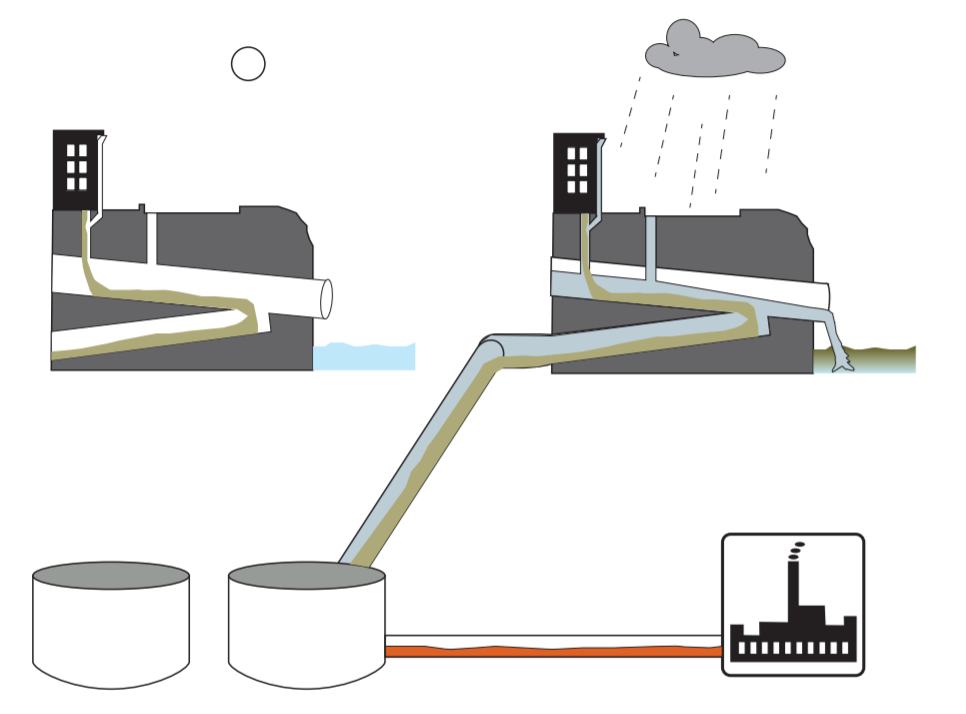A house for ants!
Flood prevention and butterflies and The role and potential of stormwater detention basins: Part 2
There are over 16,000 stormwater basins in all of New Jersey (https://hydro.rutgers.edu/). Locally, there are over 1500 detention basins in the Lower Raritan Watershed. Enhancing the functions of these basins represents a large-scale opportunity to restore environmental quality. When detention basins are lined with native plants, the thicker vegetation can trap contaminants and prevent them from running into streams and drinking water sources.
Storm Sewers are the Invisible Water World Around Us: Stormwater Part 1
Here I introduce the system that I am working in, the problem that I have identified, and my research agenda. Though stormwater, and the systems designed to contain it, are part of our everyday landscapes, we usually don’t notice them. As flooding and pollution from storms worsen, stormwater and its systems deserve our attention.
A Qualified Success
Earlier this month, I passed my qualifying exam to become a PhD candidate (and not get kicked out of the program, yay!). There was a lot of reading involved, but in the end it was not so bad. It gave me just the incentive I needed to get through thousands of pages of background and come out a little more prepared for my research.
Transmissions from Hawaii: A Fruitful Adventure
I love fruit, and my mission in Hawaii is to eat as much of it as I can. Botanically, a fruit is the fleshy, seed-container of a plant. While fruits all share the same basic parts, the variation is fascinating and delicious.
Transmissions From Hawaii: (Botanical) Paradise Island
I’m on my honeymoon in Hawaii, and I’ve seen so much that I want to share! Here are some tropical plants to cheer up winter in the Mid-Atlantic.
The Influence of Landscape Context on Native Plant Species in Stormwater Detention Basins
One of the ways I am using the data from my fieldwork is to study the way the surrounding landscape influences the plant species found at a site. I found the percent native species at a site is negatively affected by commercial and services land use and transportation and utility areas in the surrounding area but positively affected by wooded wetlands and recreation land nearby. This can help land managers fine tune restoration decisions for different kinds of sites.
November in the Lab: Extractable nutrients, or what color is it?
Phosphorus and nitrogen are essential for plants, but can become pollutants in high concentrations, so I am measuring levels in the soil in my study sites. In this series of analyses, I am using the color of chemical reactions to measure the concentration of nitrogen and phosphorus in soil. In the analysis, I compare the color of my samples to the color of samples of known concentration using a spectrometer. This analysis shows a convoluted and ingenious way that someone came up with to measure these very low concentrations of elements.
October in the Lab
What do I do with the soil samples once I bring them back to the lab? Some fancy science and a lot of weighing and re-weighing each sample. See a sequence to prepare soil for nutrient content analysis.
Plate Botany
Recently I was at the grocery store, and this know-it-all sign reminded me of a blog post I wrote for the Farm Cooking School back in 2014. People often want to tell us that a tomato, a cucumber, or some other vegetable “is actually a fruit.” To say this is to confusedly blur the lines between culture and botany.









